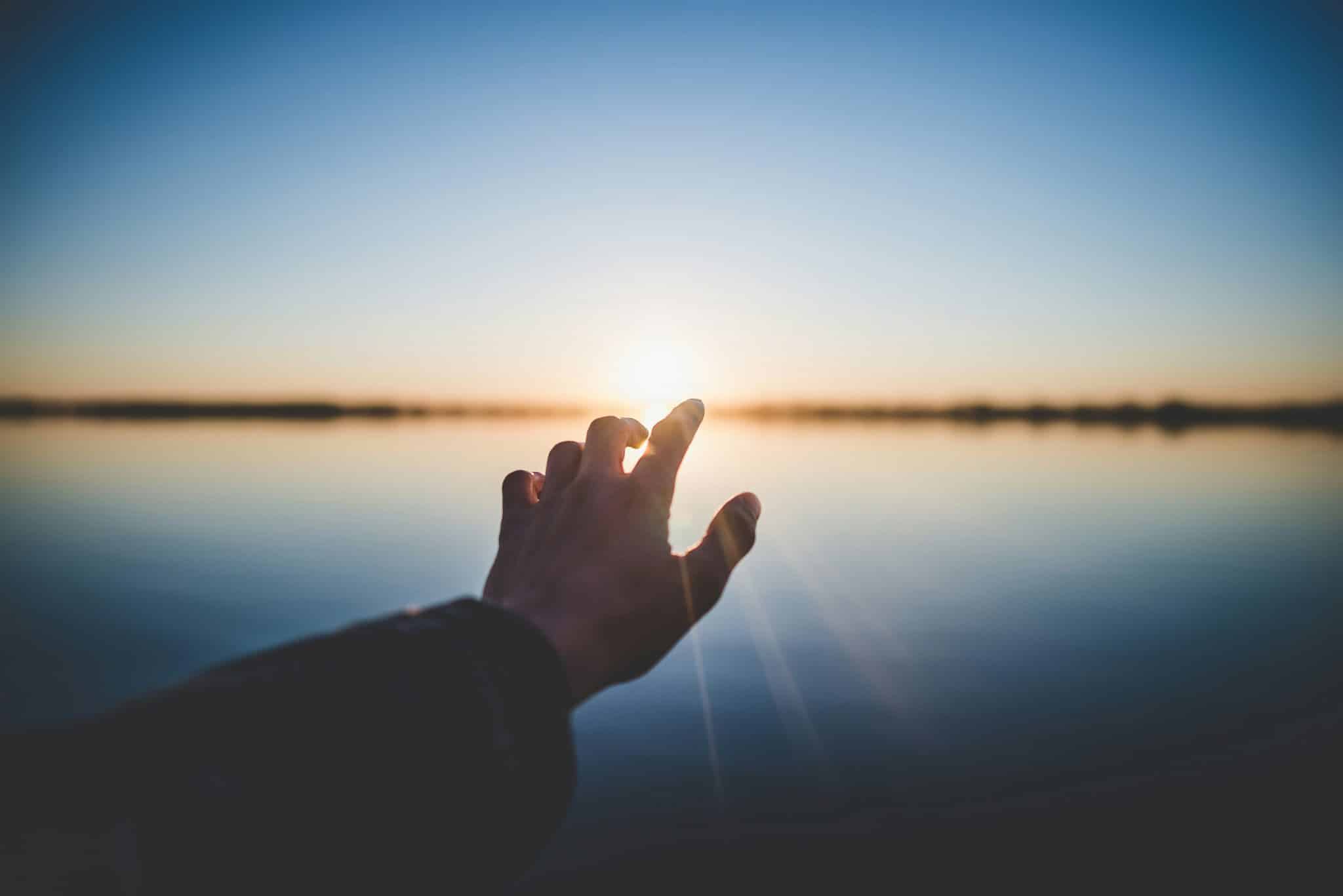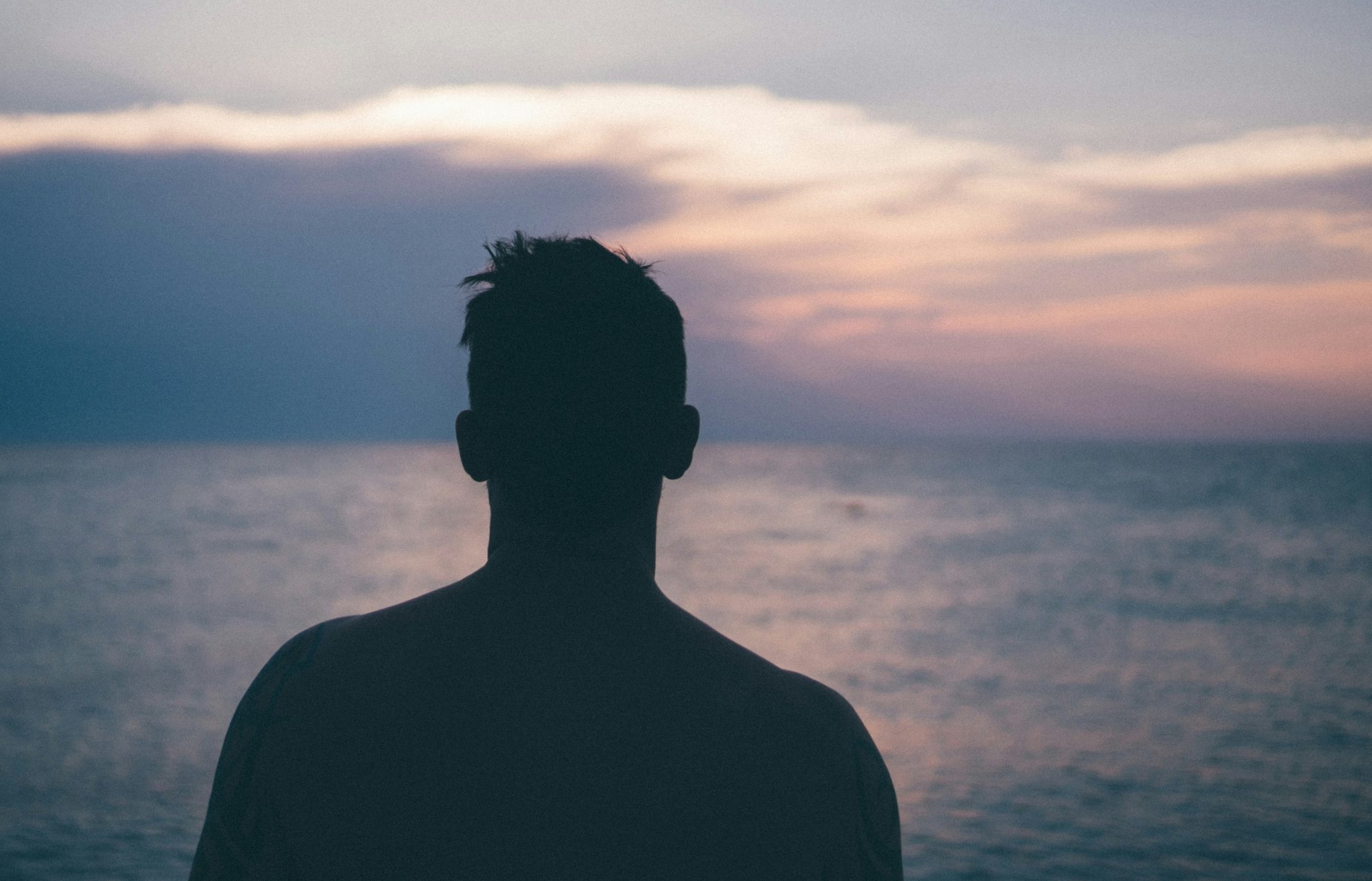Not ready to travel yet? Try going for a silent retreat “staycay” in Singapore
by Janice Tai // October 22, 2021, 5:21 pm
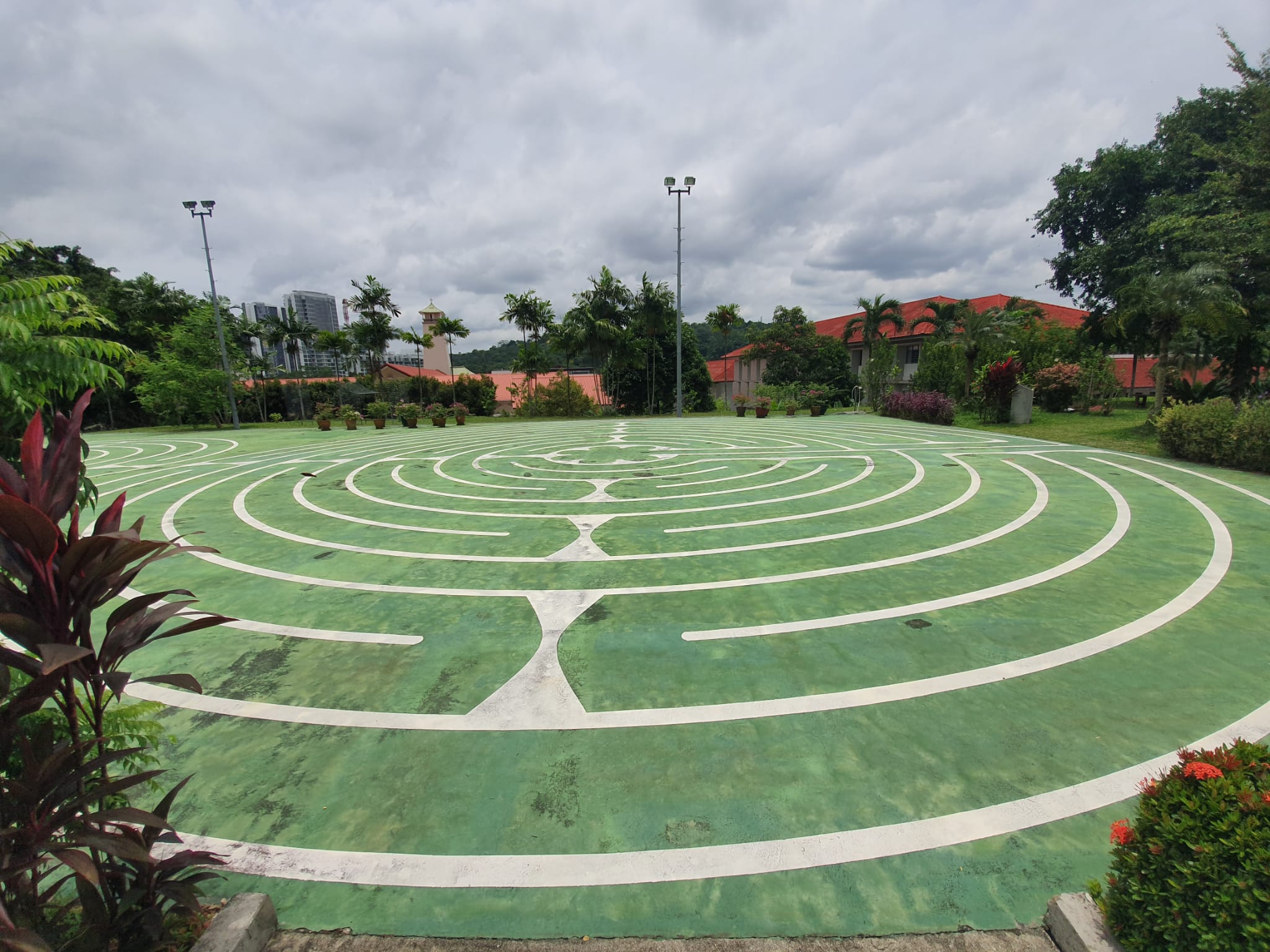
The labyrinth for retreatants to prayer walk through at Monfort Retreat Centre.
I started going for silent retreats at about the same age as perhaps Jesus did.
The seemingly significant 3-0.
Not that Jesus did not spend regular solitary time with his Father before that, but Scripture specifically recorded accounts of Jesus intentionally withdrawing for time alone to pray and be with his Father when He began his ministry at about the age of 30.
The business of life and demands of the people upon Him were overwhelming but, at times, He chose to step away from the tyranny of the urgent to focus on what was more important, far from the madding crowd. (Mark 1:35; Mark 6:46; Luke 9:18; Luke 9:28; Matthew 26:36-45; Mark 14:32-41; Luke 22:39-46.)
Spending quiet time with his Father enabled him to rest and recharge, as well as gain clarity and discernment, before re-joining the crowds.
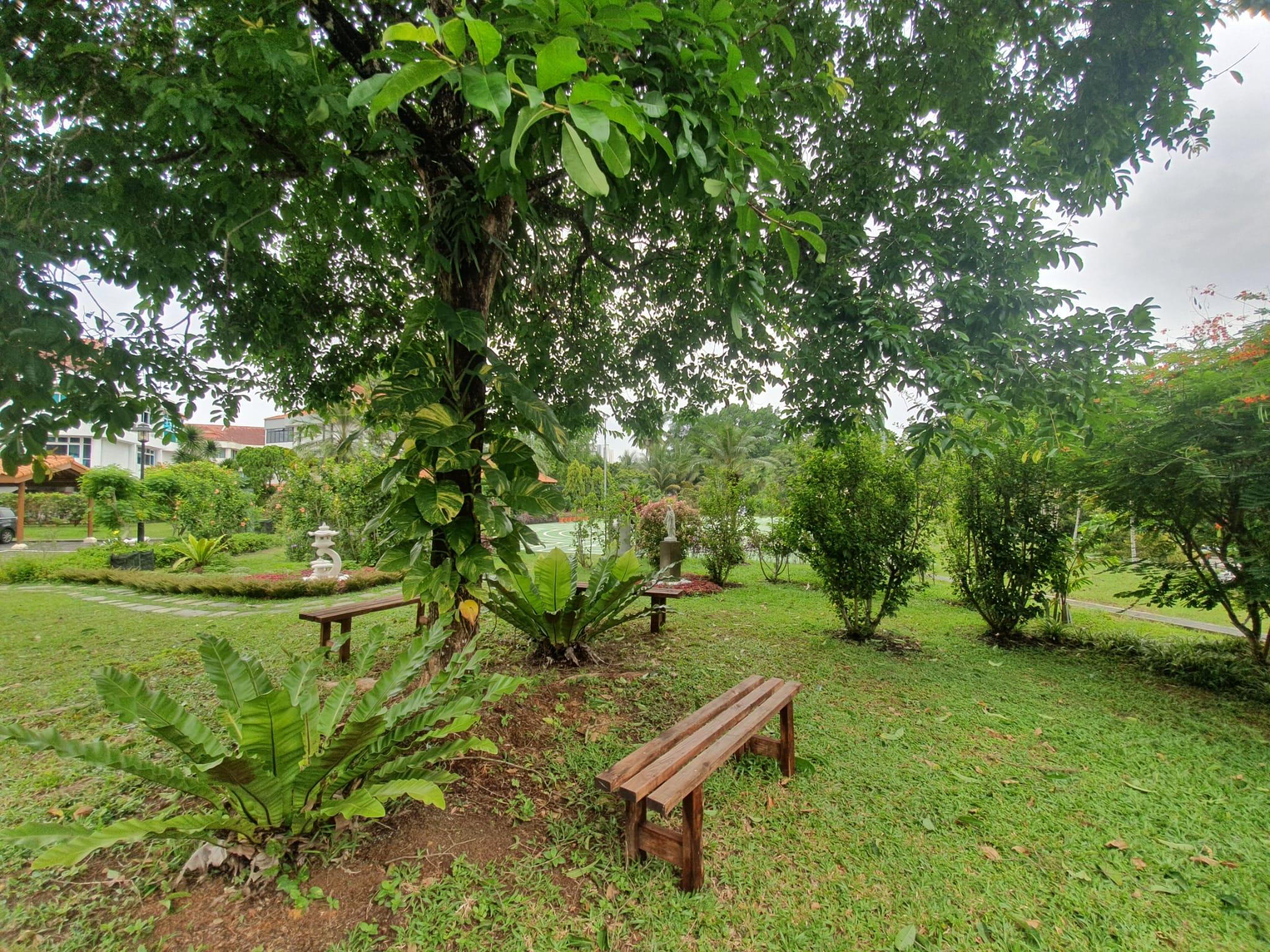
The garden at Monfort Retreat Centre offers retreatants a place for rest, rejuvenation and contemplation.
Luke 5.16 tells us that Jesus “often went to a solitary place to pray”. Upon hearing of the beheading of John the Baptist in Matthew 14, Jesus “withdrew by boat privately to a solitary place”. Yet the crowds followed him on foot and He had compassion on them and healed the sick. After the miraculous healing and feeding of the 5000, he “went up on a mountainside by himself to pray. When evening came, he was there alone”.
Apart from a time of refreshing, the solitary time away happened before pivotal missions – take Luke 4:1, when He spent 40 days in the desert before starting his ministry – and before making key decisions – Luke 6:12, when He spent the entire night alone in the desert hills before choosing his disciples the morning after.
Unlike Jesus, what got me started on silent retreats was a more mundane reason.
Quarter-life crisis
It was a delayed version of a quarter-life crisis.
On the brink of 30, I felt more tired and fearful of what the next decade would bring than sparks of anticipation or excitement.
I was burnt out and disillusioned from work, and nursing several relational wounds.
How naïve I was to presume I could easily disconnect from the world and connect with God.
In 2018, I checked myself into boutique hotel-cum-retreat centre, Changi Cove, for a three-day-two-night stay, foolishly thinking I could do this “Silence & Solitude” thing on my own.
How wrong I was. The outer environment may have changed to one of a peaceful oasis of calm in the midst of nature, but the inner noise remained.
The exhaustion I felt and the brokenness I carried within would take years for me to process and heal. How naïve I was to presume I could easily disconnect from the world and connect with God.
I also thought I was being smart in guarding against potential boredom and loneliness by slotting in just a snippet of company and social activity for each night there – dinner with my mum on the first night and a group of cell group friends the next.
I would later learn that this was a big no-no. As it was, three days may be too short to fully allow soul and spirit to immerse in silence in order to get to that level of stillness, within and without, that would enable one to wait on God and listen for His voice.
At the end of that year, I would go for another silent retreat at Lifesprings Canossian Spirituality Centre with my mentor and a good friend.
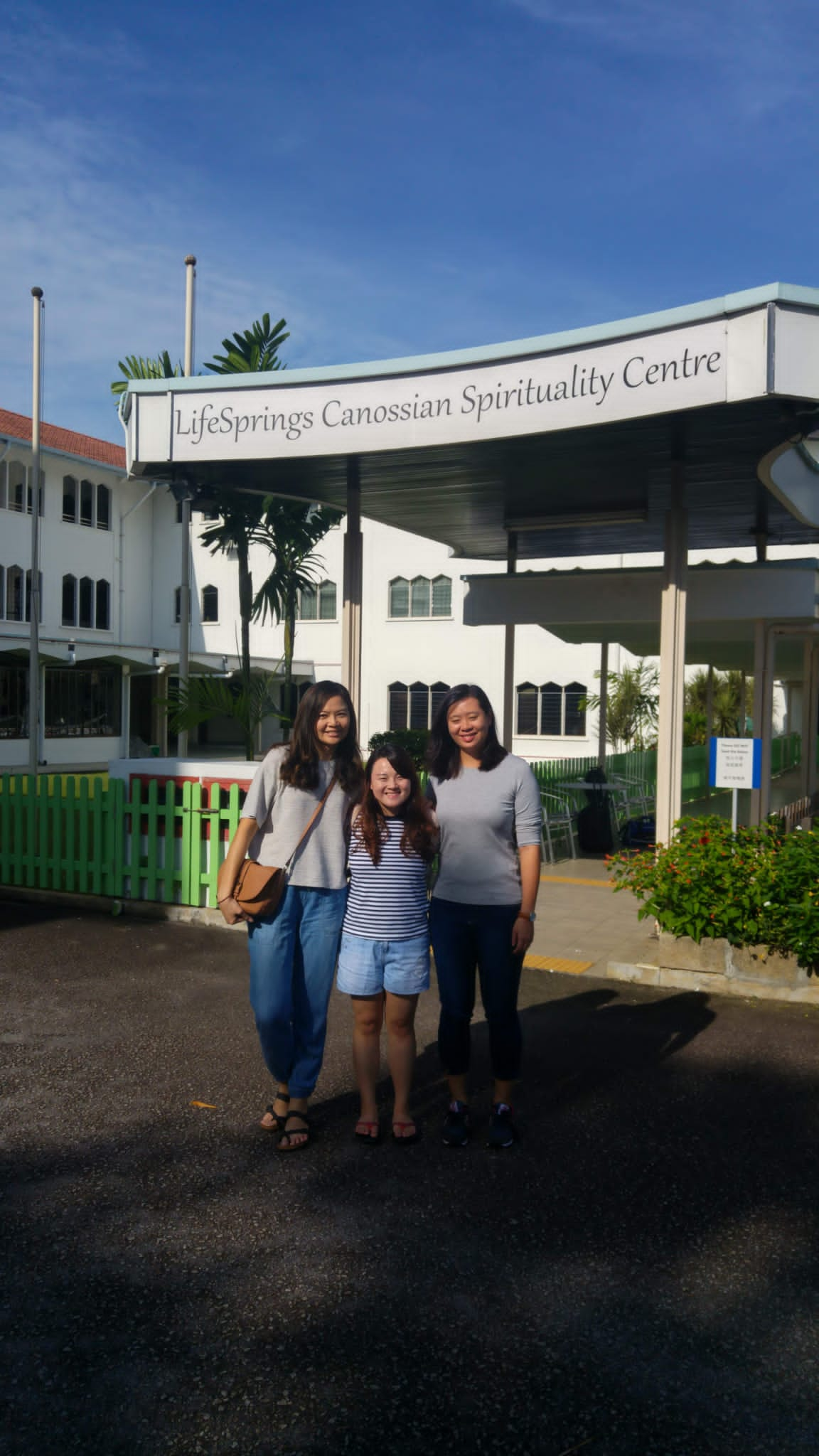
The writer (extreme right), accompanied by her church friends, at her second foray into the realm of silent retreats.
Reminding us to take the retreat seriously, my mentor said we should give each other “the gift of silence”.
I needed to “do” something; I could not just “be”.
While it was reassuring to have familiar faces around, I have since learnt that it could be best to have a go at these retreats alone. It was hard not to acknowledge each other when we walked past each other or ate in silence together in the dining room.
It was also hard to shed the appetites of our flesh, literally and metaphorically.
My friend and I ended up walking out to the nearby petrol kiosk to buy snacks and freed ourselves from the rule of silence by chit chatting a little outside the retreat house when night fell.
I would continue to go for a silent retreat once a year for the next three years.
The one I did at a friend’s empty condo in Yishun (in an attempt to save money) failed spectacularly, as I ended up distracting myself with swimming in the pool and inviting friends over at night.
The other two guided retreats that I attended at Changi Cove later on proved more fruitful as they were structured and I was given some spiritual exercises and resources to pray and meditate on.
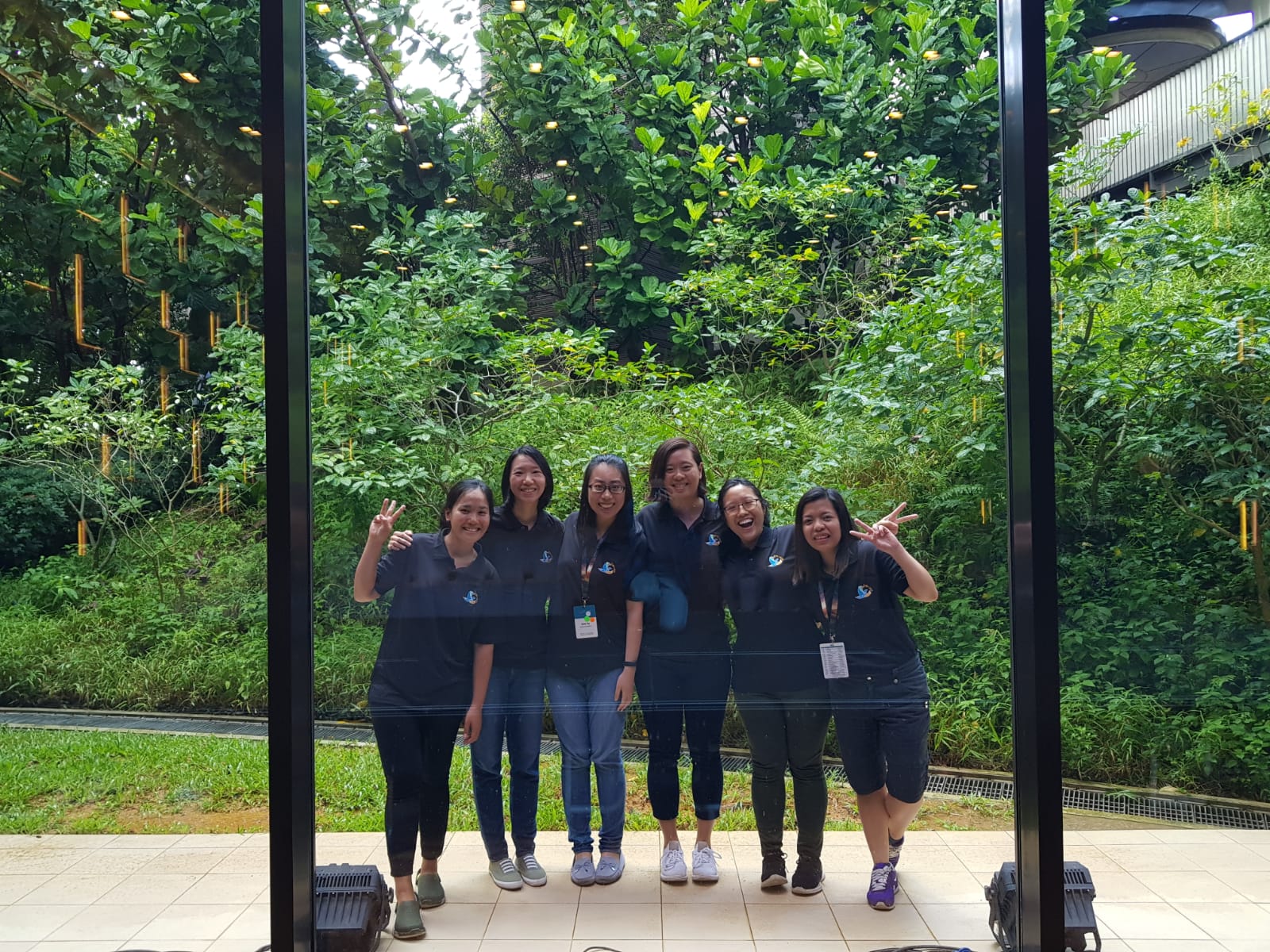
The writer (third from right) and her friends from Tung Ling Bible School at a silent retreat at Changi Cove in 2020.
Still, I continued to make another cardinal mistake – bringing books to these retreats.
Faced with long stretches of time ahead, I wanted to arm myself with the false comfort of productivity. Gaining new information and insights about God and my faith gave immediate gratification.
I did not know how to be alone with my God just to hang out and “waste” time together.
I needed to “do” something; I could not just “be”.
Deep down, similar to the experience of many others on such retreats, there was the fear of: What if, after spending all that money, time and effort, I did not leave with greater clarity on the issues or decisions that needed to be made in my life?
That is, of course, silly, because God is everywhere and speaking to us all the time. It is also prideful to assume that any time spent with God is wasted if certain outcomes are not achieved.
But growing up as a child who fully imbibed Singaporean pragmatism and a work ethic where every minute – no, every second – had to be rationalised and rendered efficient, and every potential maximised, I did not know how to be alone with my God just to hang out and “waste” time together.
So when an invitation came for me to attend a silent retreat organised by One Path, I was relieved to see that its preparation notes actually spelt out the instruction that “no books or work laptop” should be brought to the retreat.
This would be my 6th silent retreat since existential dread hit me prior to turning 30. Would this experience be any different from the rest?
One Path
I arrived at Montfort Retreat Centre, which was up on a little hill along Upper Bukit Timah Road, on a Friday morning in October.
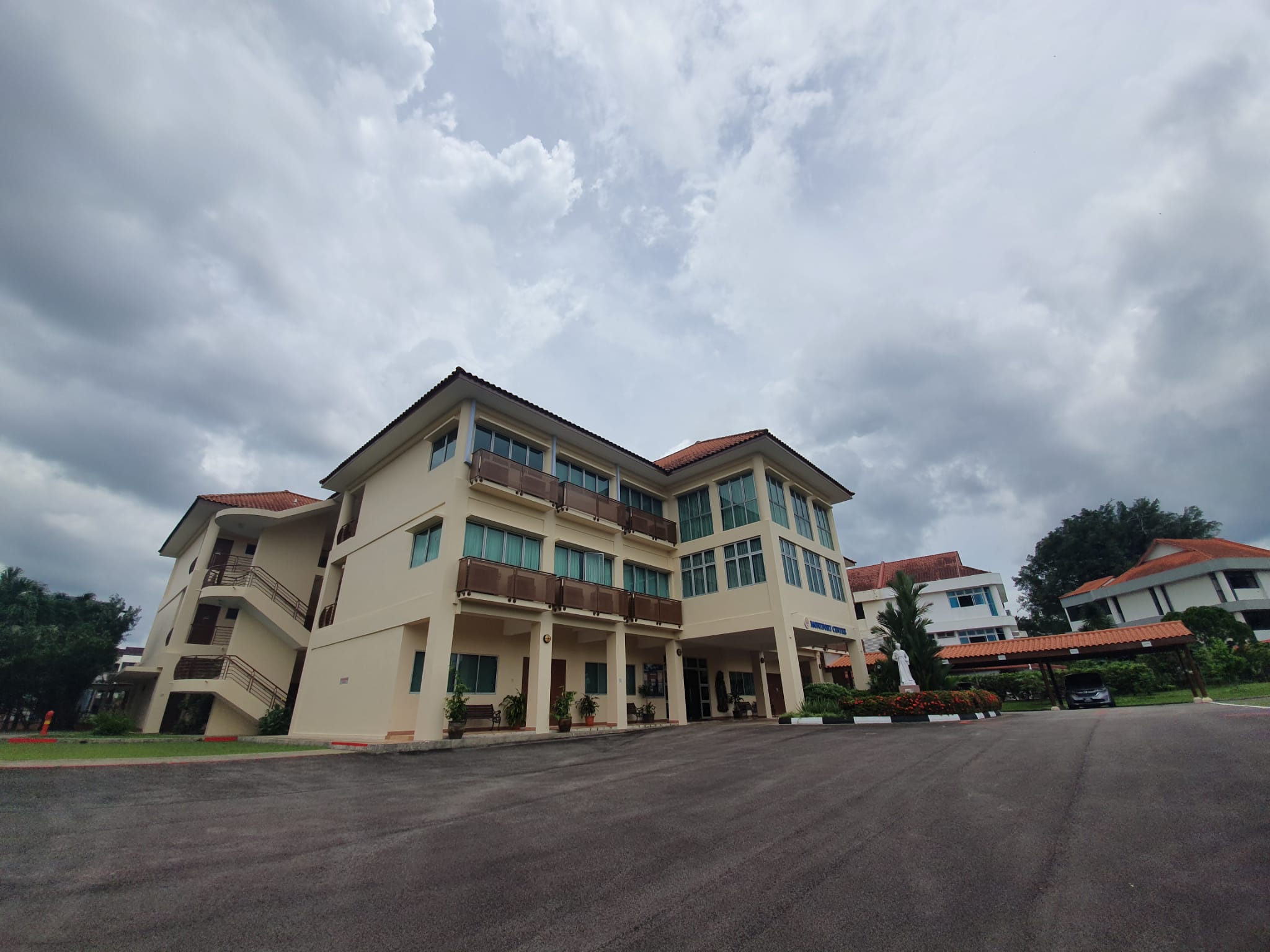
Montfort Retreat Centre is located at 624 Upper Bukit Timah Road, near Boys’ Town and Assumption Pathway School.
The spiritual director of the retreat, Alfred Quah, welcomed me and 12 other women into a seminar room where we were about to have our first meditation session.
The theme of the retreat was on the enticing – or tiring, depending on your perspective – topic of “seven deadly sins and virtues”.
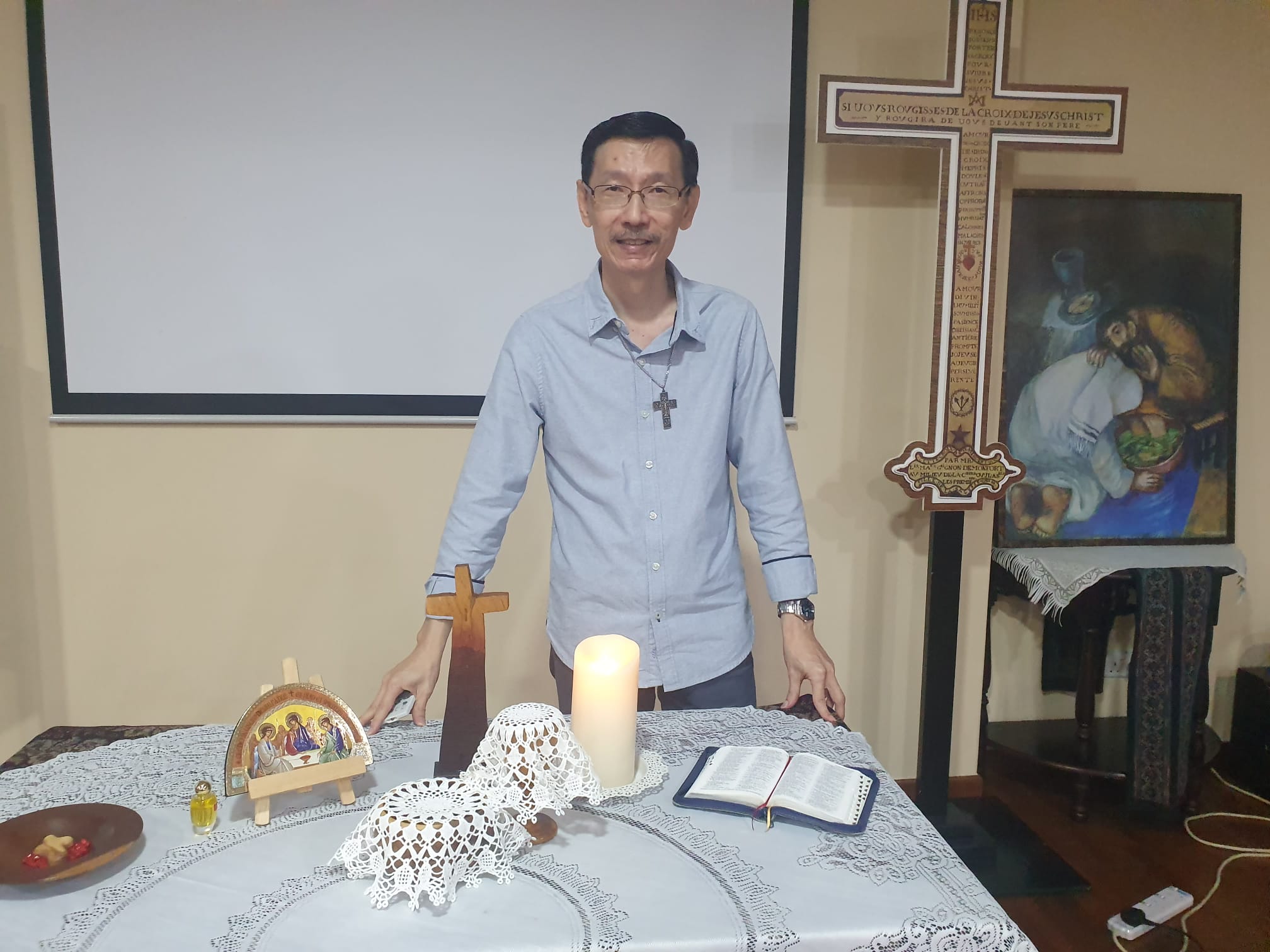
Spiritual director Alfred Quah from One Path Ministry, which provides pastoral counselling and conducts silent retreats.
Alfred said dwelling on this theme offered a template for “self-examination” and an “outcome-based” plan for spiritual formation by providing a pathway of intentional discipleship with the old/new self framework.
This sounded up my alley; the “do-er” in me rejoiced.
By pairing the virtues as alternatives to the sins, we explored the roots of the seven deadly sins and how they could be counteracted by the nurturance of its complementary virtue.
For instance, we could try to cultivate wisdom, in place of pride. Hope, in place of greed. Love, instead of lust.
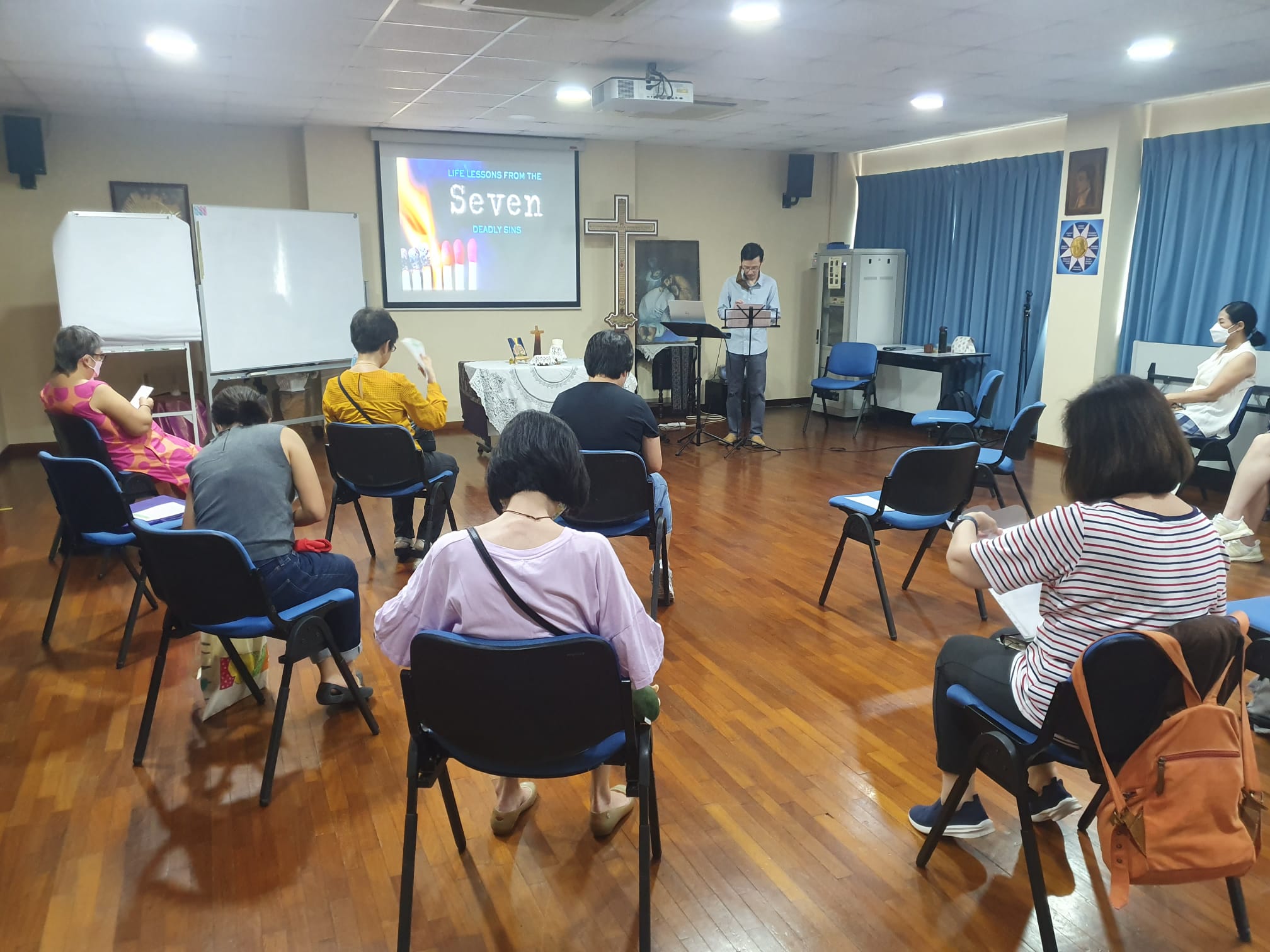
The seminar room where morning meditation sessions and evening prayer sessions are held.
It was quite heavy going for a Friday morning, and I was glad that soon it was time for lunch.
Bento sets were served. It was refreshing sitting with a group of people, yet released from the social obligation of making small talk.
Instead, we enjoyed the solidarity of each other’s company while eating mindfully. I found that eating became more pleasurable when I slowed down enough to discern and appreciate the different flavours and textures of the dishes. Thankfulness arose in my heart.
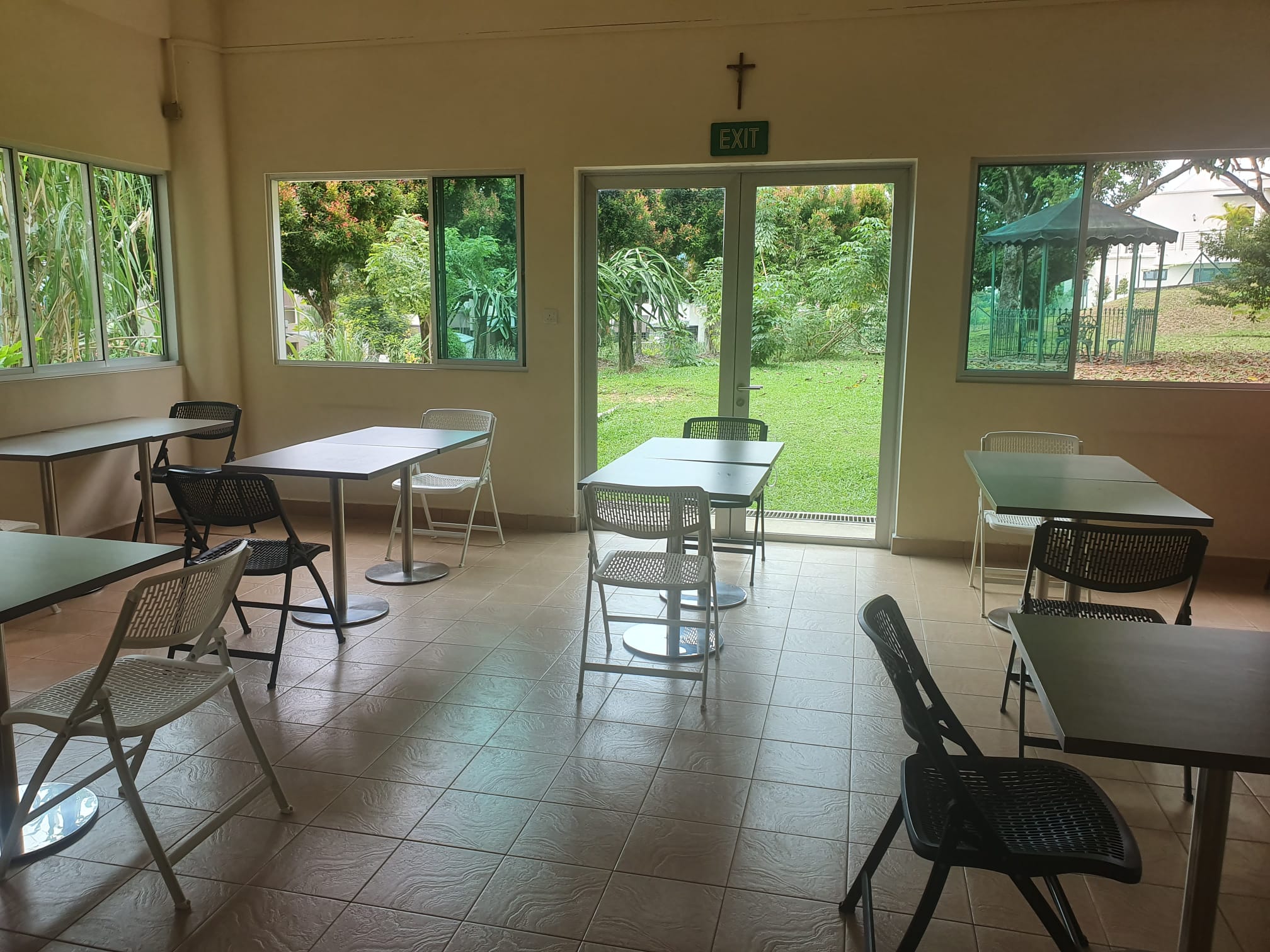
The dining hall opens up to beautiful views of the garden beyond.
Yet, Singaporeans being a hasty lot, there was a limit to how long we were willing to linger over a meal in silence.
Throughout the retreat, I noticed that most of the woman would spend less than half an hour on a meal in the dining hall.
After lunch, the real work began. There was no more spoonfeeding, or passively absorbing and listening to spiritual truth.
Now, it was up to me to return to my room to allow the Holy Spirit to speak to me through the morning’s materials, or otherwise, and surface whatever He deemed fit.
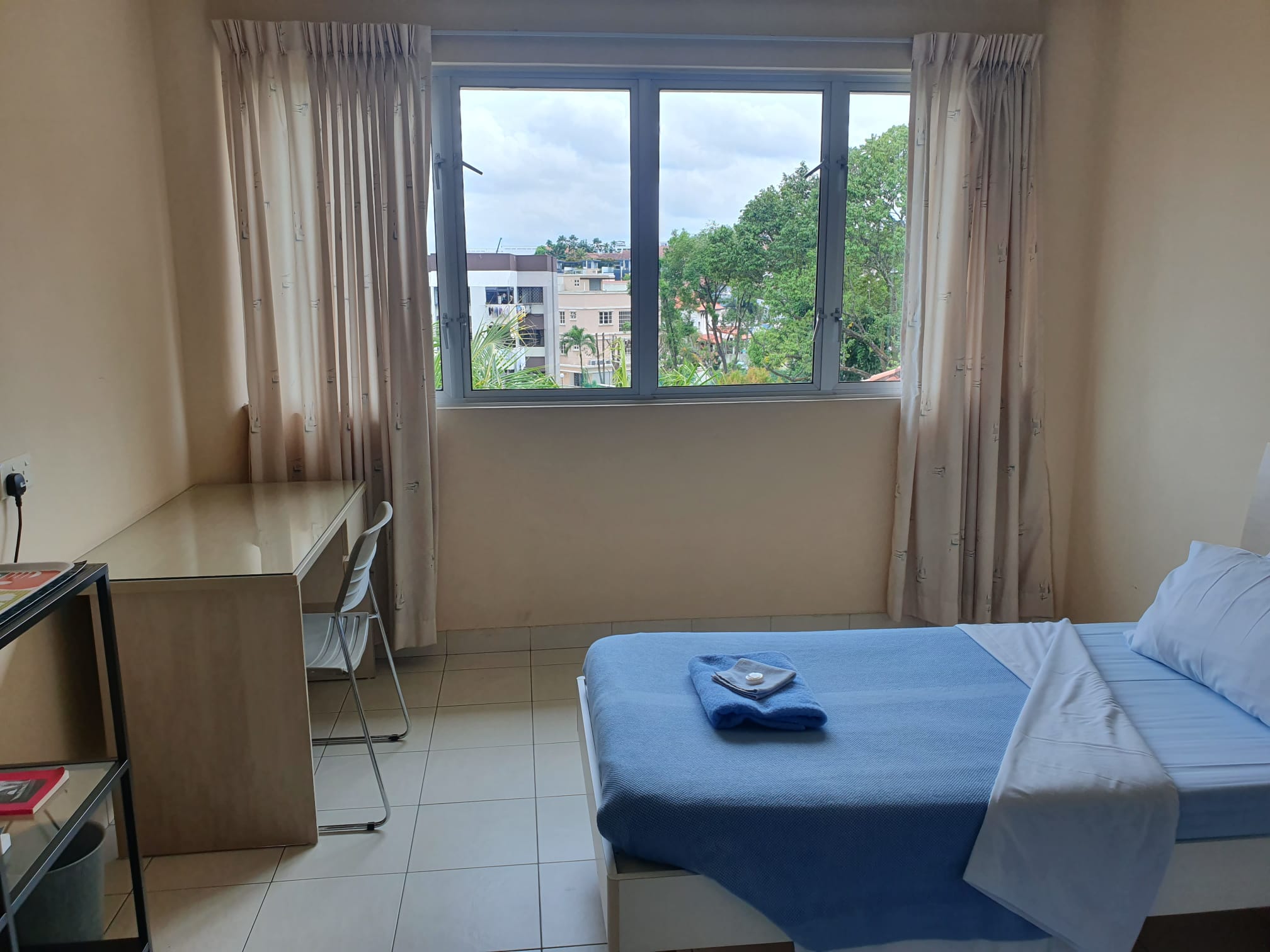
The room, which overlooks greenery, is basic and clean.
It was not hard to pass time that afternoon. I felt that God had already been putting a finger on one area of my life during the morning meditation session. As I talked to God about it, I was drawn to the last page of the notes that outlined St John Climacus’ six steps in the process of our movement towards sin.
In being aware of the six steps, the aim was to identify these initial reactions in ourselves for the purpose of nipping sin in the bud.
The last two steps of the descent into sin involves a stage of “struggle” and “passion”, where one either marshals sufficient power of the soul to counter the attack or succumbs to the pleasure of desire, allowing it to become entrenched like a habit.
“How do I develop the fear of the Lord?” I asked the spiritual director during the one-on-one half an hour session later that afternoon.
To me, fear is key in ensuring that we do not struggle with sin – not become comfortable living with it, or too hardened to know it exists in our lives.
And how do we experience God and His ways as the more satisfying thing, instead of turning to destructive habits that we know we ought to avoid but we continue to engage in each time emptiness wells up?
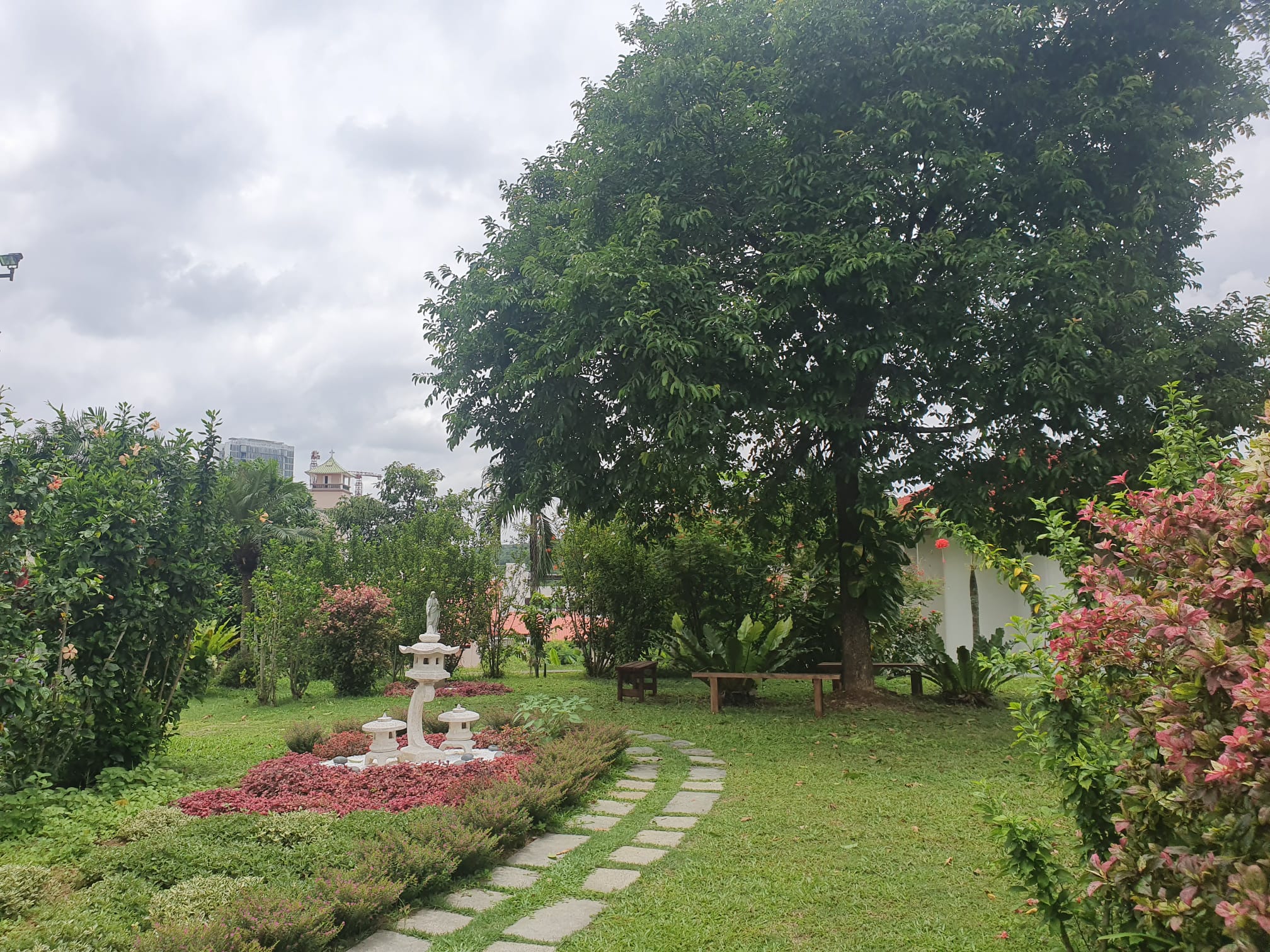
The garden infront of the retreat centre allows for quiet reflection.
You need to approach it as an emotion rather than through the intellect, Alfred answered.
Fear starts with a supposedly negative emotion – for instance, of being frightened. Angels in the Bible are known to urge their human listeners not to be afraid when they suddenly appear. (Luke 2:10, Luke 1:30)
“How do I develop the fear of the Lord?” I asked the spiritual director.
But when we experience God and His love through regular encounters with him, that sense of trembling will evolve into a different kind of fear: One arising from reverence and awe.
That is a good and appropriate fear to have when we find ourselves before a holy and sovereign God.
Alfred and I had a good conversation and I left the session knowing that I truly needed to feel that sense of reverence before my Maker before lasting change could occur.
After dinner, we had an evening prayer session.
A series of songs were played for worship and reflection, starting with one that reminded us that we were all homeward-bound as transient pilgrims on this earth.
Due to the Covid-19 pandemic, we could truly reflect on the lyrics and sing from our hearts.
As the Holy Spirit moved among us, tears were shed, including mine. For once, I was grateful for the cover of the mask upon my face.
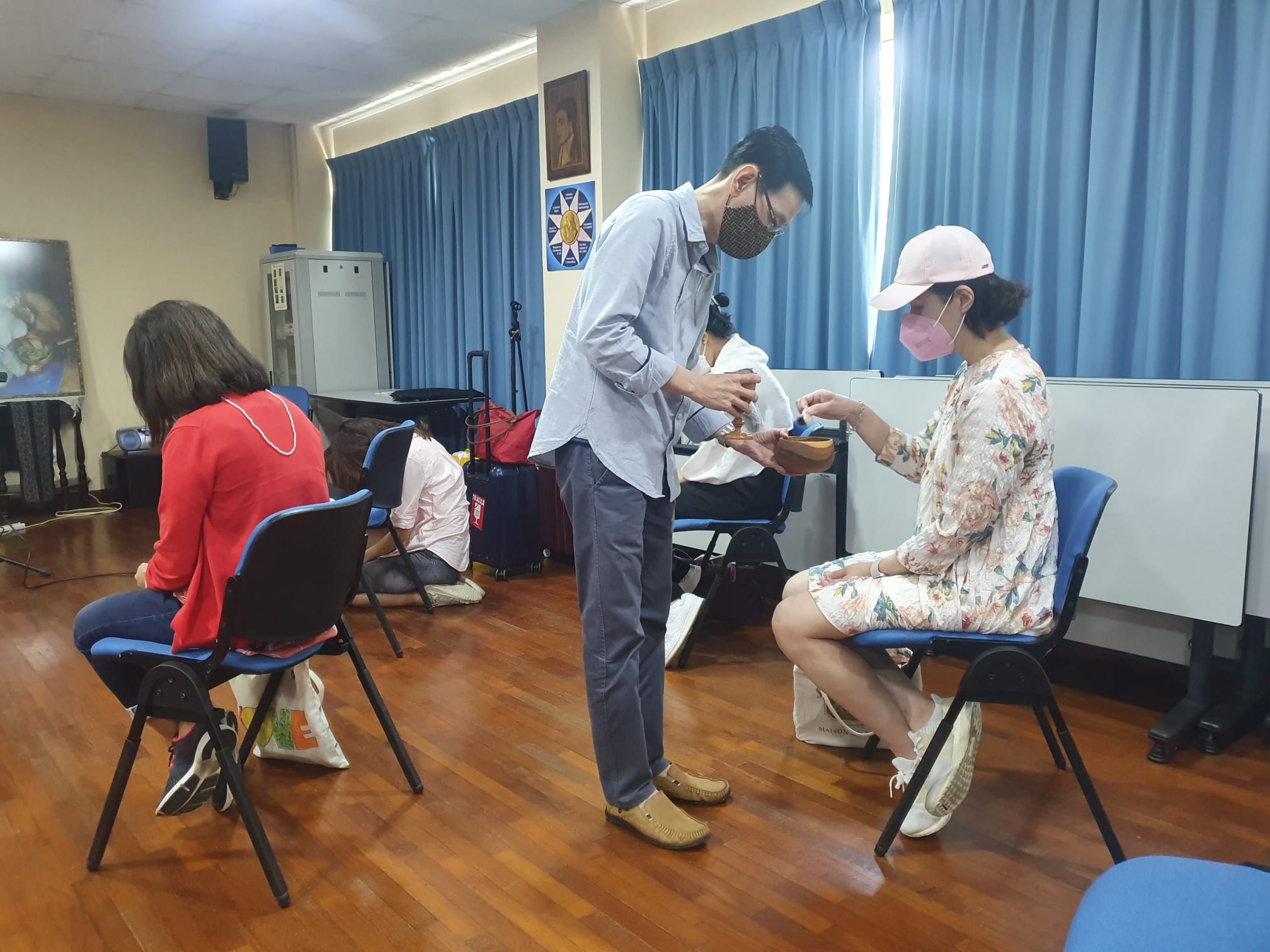
Spiritual director Alfred Quah giving out the holy communion during the closing session on the last day.
Day two of the retreat followed a rhythm similar to the first.
We had our morning prayer and meditation session before being left on our own for some quiet time from the late morning onwards.
The maze of life
Eager for some fresh air, I headed for the labyrinth within the garden just in front of the centre.
For most Christians who walk the labyrinth, Alfred said, the walk is a time for releasing, shedding and letting go of the cares and concerns that keep us distracted and preoccupied. The center of the labyrinth represents Christ within and a place of rest. One may receive clarity and insight or rest in His presence.
The return walk is viewed as returning to the world with a renewed vision or a refreshed spirit.
What fascinated me about the labyrinth was how much it was a model, or metaphor, of life. After all, in life, as in the labyrinth, we do not know where the path will take us.
At times, the path led me inward and I found myself so close to the ultimate goal of reaching the centre, yet it suddenly turned to lead me outwards again. At other times, I walked the outer rim of the maze, thinking that there was still a distance to go before arriving at the centre, only to find myself at my destination.
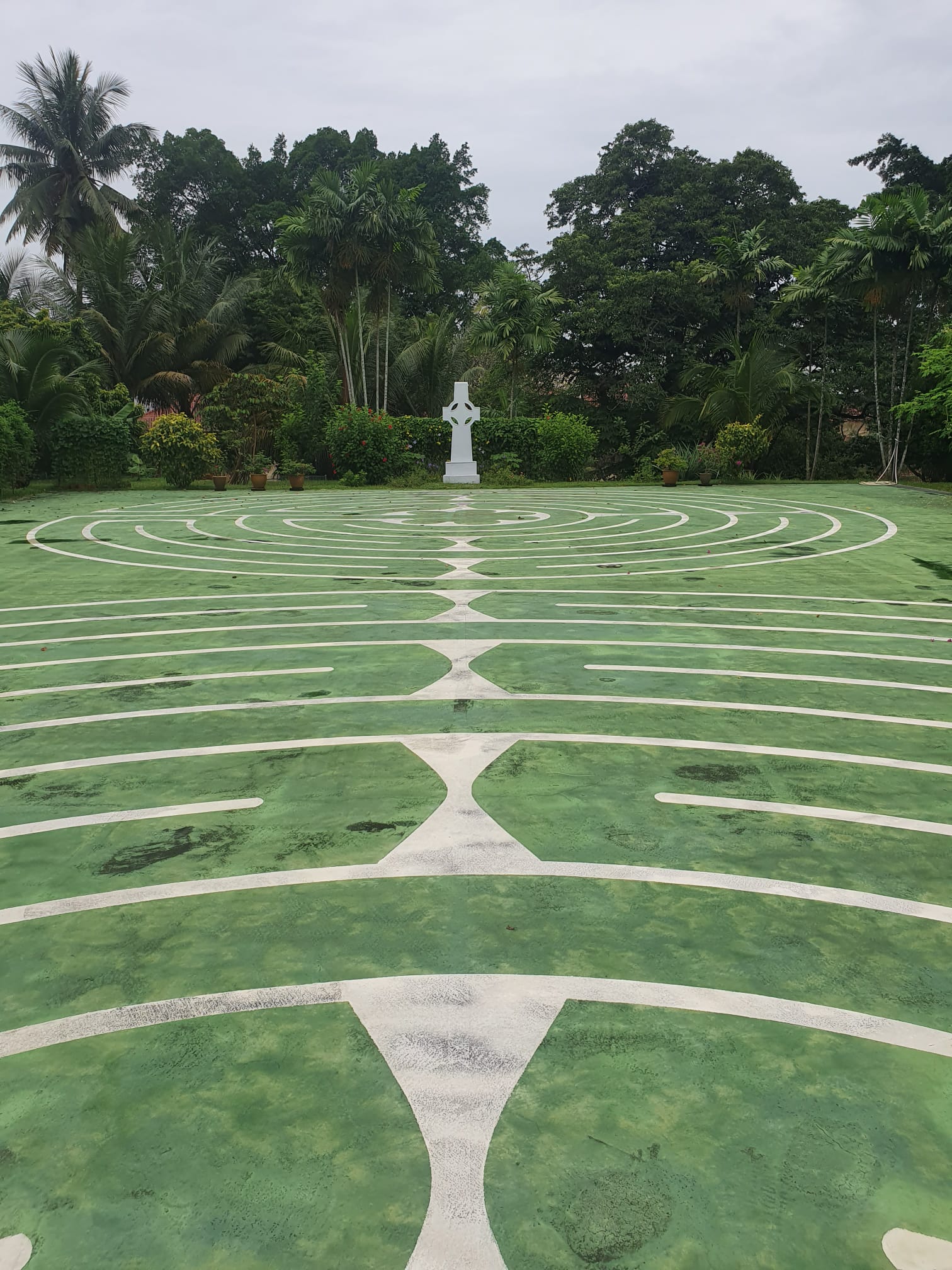
Monfort Retreat Centre has two labyrinths, one bigger than the other.
Yes, we cannot foresee the twists and turns that the future holds, but we know that the path will eventually arrive at the centre: God.
In the labyrinth, we met others along the path – stepping aside for some to overtake us, and overtaking others.
At the centre we rested, watched others and prayed. Sometimes, we stayed in the center a long time; other times we left quickly.
I was surprised that I spent almost an hour in the labyrinth, walking with and talking to my Lord.
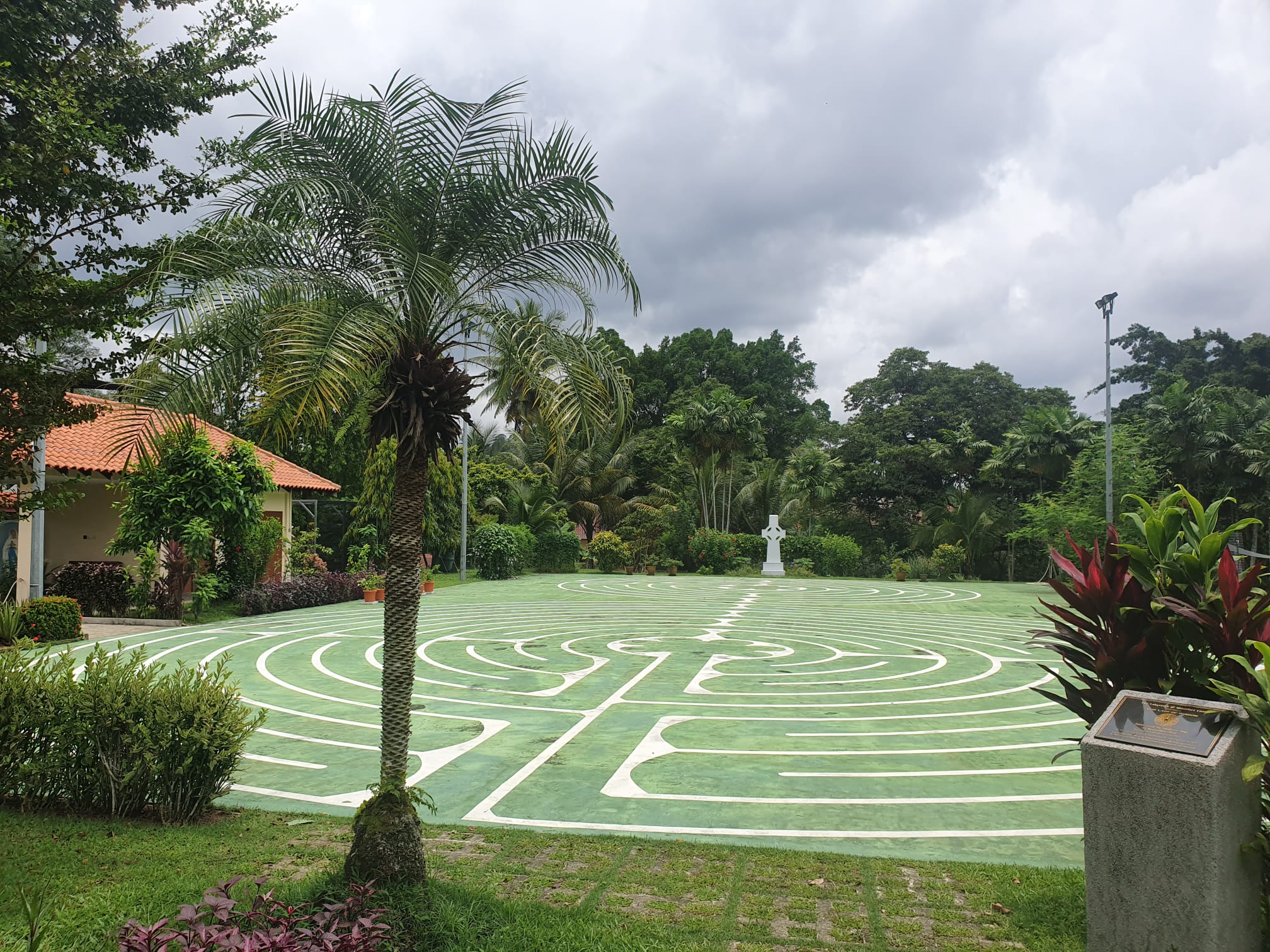
Walking the labyrinth clears the mind and gives insight into our spiritual journey.
After lunch, however, I started to feel sleepy, bored and restless.
“You can expect feelings of sleepiness, discomfort and fear when ‘nothing productive’ seems to be happening.”
The afternoon stretched tiresomely ahead of me. Did I still have to continue to do the tedious work of being still, listening to God, and reflecting on my day and life, when nature outside was beckoning?
The nearest parks – Dairy Farm and Chestnut Nature Park – was a half hour walk away.
But I knew that – while nature can be a good medium of communion with God – its attraction for me at that moment was for entertainment and distraction.
So I resisted the temptation to do anything other than sitting with God and talking to Him.
“Will you stay put even if you grow restless and bored? Will you constantly come back to the centre when distracted? You can expect these and the feelings of sleepiness, discomfort and fear when ‘nothing productive’ seems to be happening,” pre-empted the retreat notes.
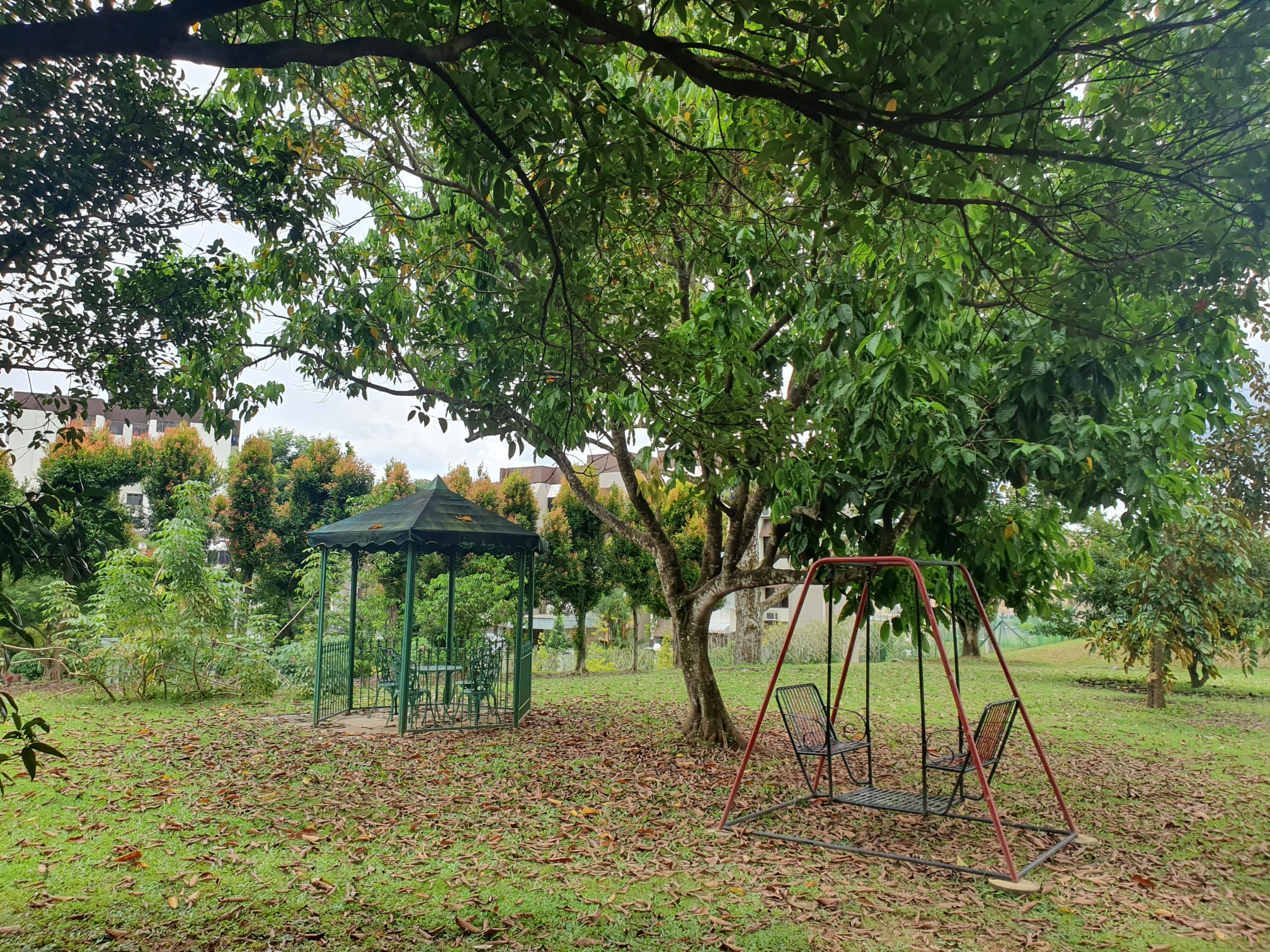
Pockets of spaces that are conducive for contemplation in the garden.
I remembered the words of a friend, Lily Chia, who is in her 50s. She told me: “I found it ironic that I spent the two days of my first silent retreat trying hard to ‘learn’ mindfulness. It was only through the spiritual director’s gentle guidance and a complete surrender of my own ‘learning’ efforts that I encountered God and fully understood what it meant to be mindful of God’s presence in my life.”
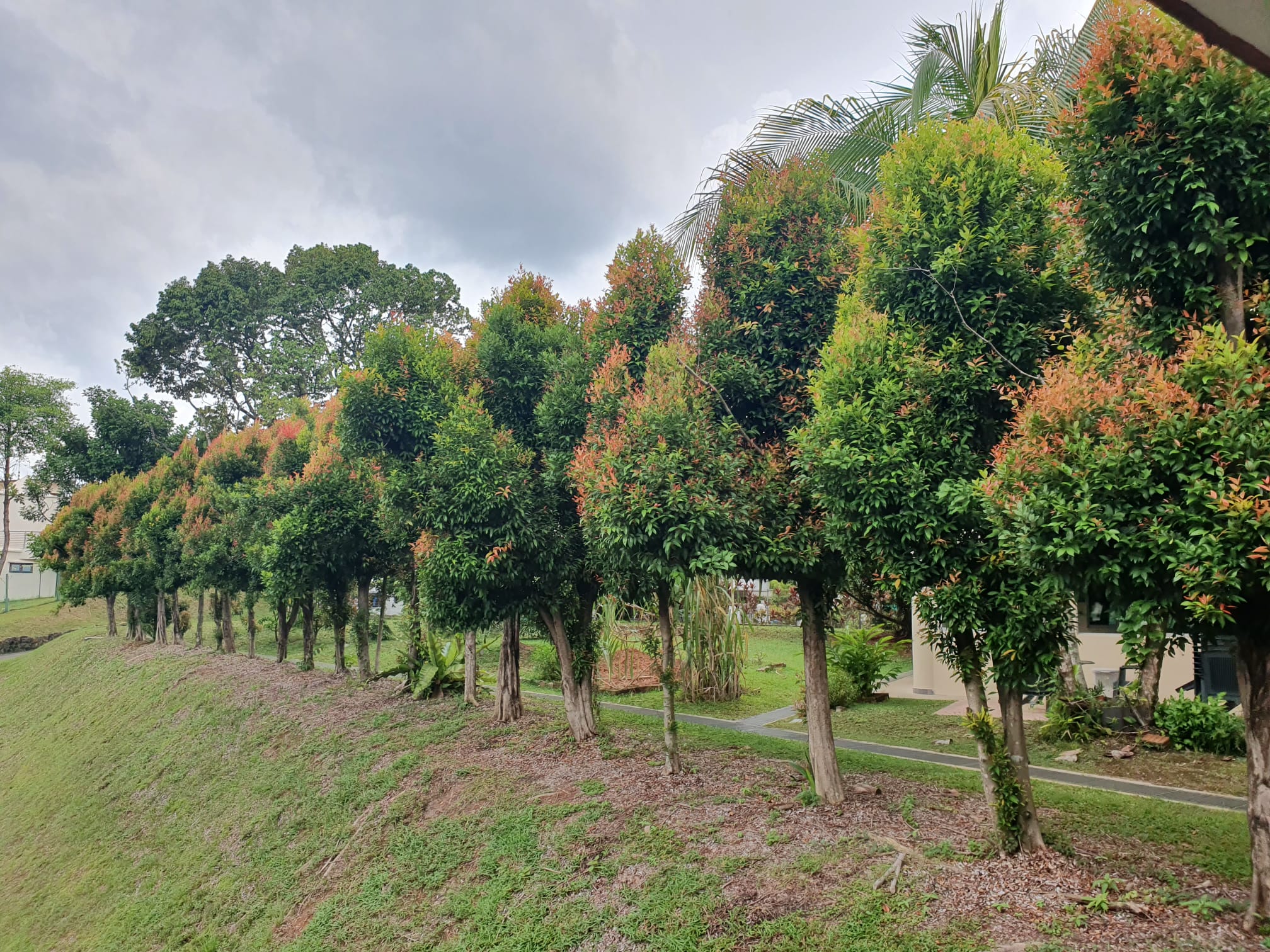
The boundary of the garden at the Monfort Retreat Centre. A retreat is a time where we slow down so that we take time to notice, to wait upon and be with God in a lovingly, attentive manner.
Another contact, chief strategy and transformation officer, Kenneth Tan, 46, who first started going for silent retreats in 2017 to obtain better discernment on the forks in his life, admitted: “I realised a silent retreat is much more than a concentrated time to ‘force an answer from God’.
“It is about consecrating the time to the Lord, to rejuvenate the mind, spirit, body and soul; to slow down and reorientate.”
“Why do I think that setting aside time for God, just to spend time with God, is a waste of time? What would I rather spend the time on?”
Our complaints or disappointments about what happens, or does not happen, in retreats often reveal something about ourselves, he observed.
“Why am I so hurried? Why do I expect an answer from God? Why do I think that setting aside time for God, just to spend time with God, is a waste of time? What would I rather spend the time on?” he said.
Their words rang in my ears as I faced the prospect of a long afternoon before me. This was hard work.
It took effort to face what was within me and to discern the still, small voice of God, compared to the mindless scrolling of social media I was used to whenever I needed to space out.
I had learnt during the retreat that my constant need for new and interesting updates and information (an occupation hazard from a decade of being a reporter) could be a bad thing. This “presumption of novelties”, of needing to be first with something (be it the latest gadget or the most updated information), could stem from pride and self-centredness.
Was pride my Achilles heel then, among the seven deadly sins?
Hidden sin of sloth
As I waited upon God that afternoon, I was led to a surprising answer. He convicted me of the sin of sloth.
Similar to several others in the retreat who received the same conviction regarding sloth, I did not expect that answer as we all thought ourselves to be fairly diligent people.
The Greek word for sloth, akedeia, literally means ‘lack of care’.
Alfred, however, reminded us that sloth has more to do with being lazy about love (spiritual complacency) than being tardy about work. The Greek word for sloth, akedeia, literally means “lack of care”.
Such lack of care is clear when we build a cold wall between us and others when the demands of love are too strenuous. Apathy, resignation or avoidance follows. It could also present itself as an inner resistance, or coldness, towards one’s spiritual calling or identity.
I was guilty as charged, when it came to practising the spiritual disciplines regularly.
One could be a workaholic in life yet be a sloth when we use the busyness of life as an excuse to not attend to what is important – the things of God and what He calls us to do.
So, when I asked Alfred questions that were on my heart during our second spiritual direction session later that afternoon – How do I have an unhurried and unbusy mind? How do I be still and abide in God? – I instinctively already knew the answer.
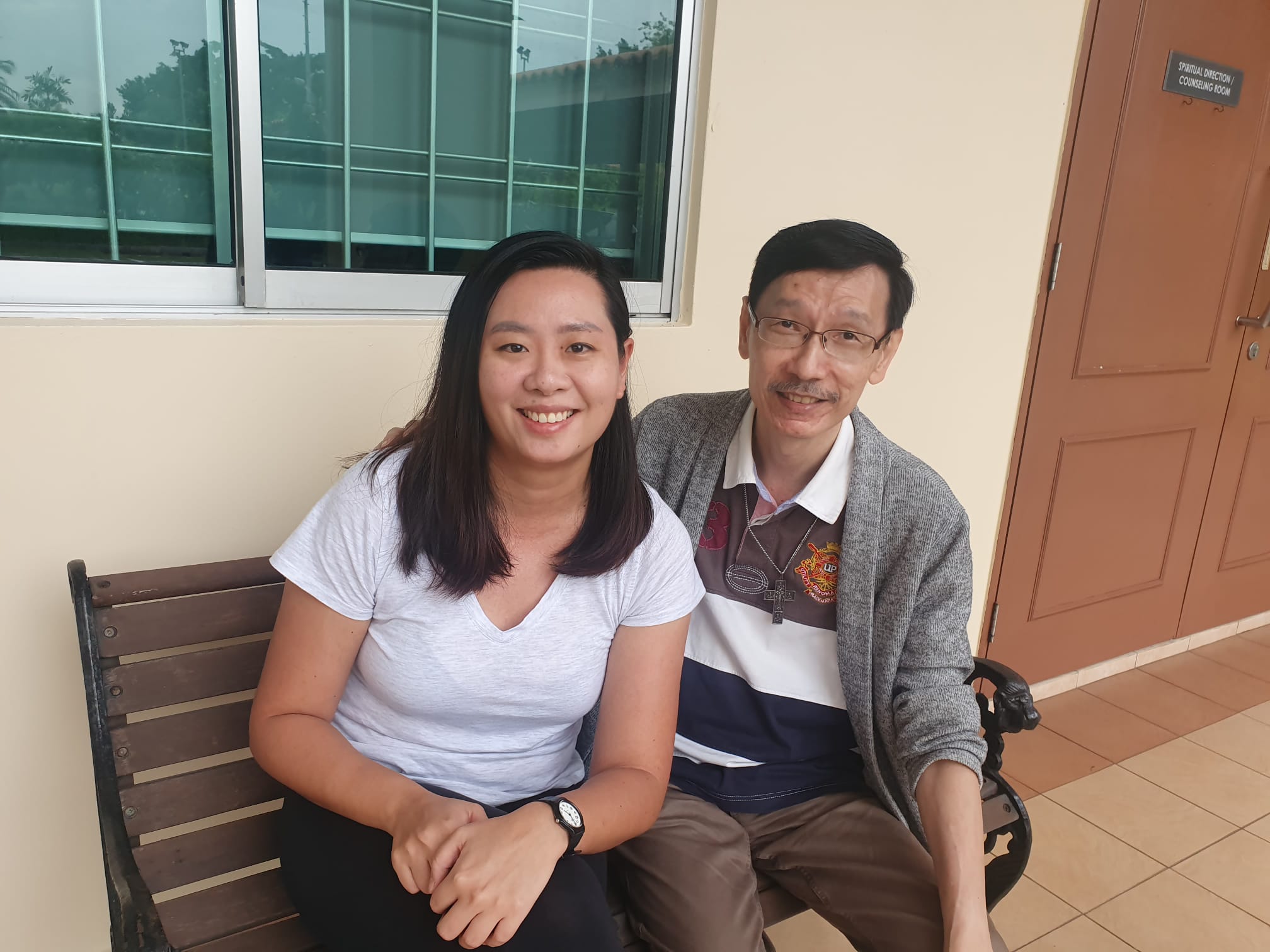
The writer with spiritual director Alfred Quah. Retreatants get a half-hour spiritual direction session with the director each day during the retreat.
“Just do it,” he said, referring to spiritual disciplines such as lectio divina (sacred reading), silence and solitude, prayer and journaling.
“What authors and books should I read to learn more about the disciplines?” I replied.
He laughed, rattled out a few names, and said: “Don’t just read about it, do it.”
I smiled, and nodded.
The challenge would begin when I head back out into the “real” world.
This retreat was organised by One Path and Rere Retreat Planners. Contact them to find out more.
RELATED STORIES:
We are an independent, non-profit organisation that relies on the generosity of our readers, such as yourself, to continue serving the kingdom. Every dollar donated goes directly back into our editorial coverage.
Would you consider partnering with us in our kingdom work by supporting us financially, either as a one-off donation, or a recurring pledge?
Support Salt&Light